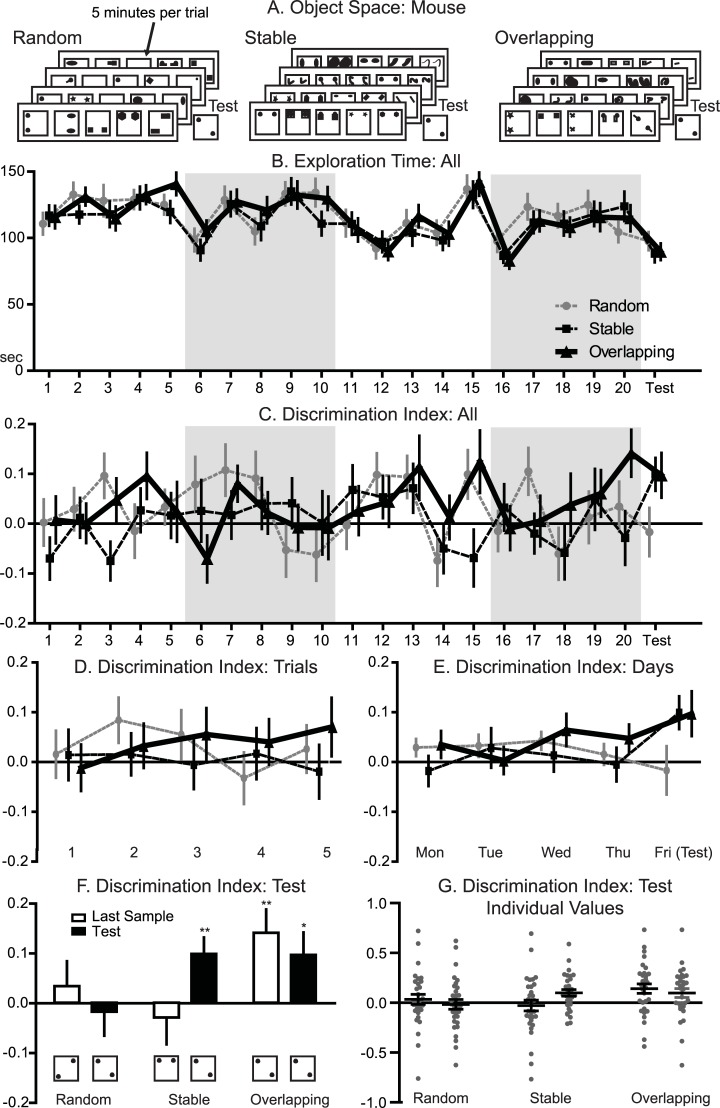Fig 3. Object space task mouse.
A. Panel: Trial structures for the 3 different conditions (object identity changed from trial to trial). In the overlapping condition, 1 location remains constant across all sample trials and the test trial, the second location varies. The locations in the last sample trial and in the test trial are equal. In the stable condition, the locations remain the same in all sample trials and 1 object is displaced in the test trial. In the random condition, the locations were pseudo-randomly chosen (controlled for equal appearance of all locations) to not allow extraction spatial patterns. One session consisted of 5 sample trials for 4 subsequent days and test trial 24 hrs later. All locations (i.e., more stable locations in stable and overlapping) were counterbalanced across animals for each condition as well as within an animal across conditions to avoid general place preference effects. B. Panel: Exploration time over the course of all 20 sample trials and test trial for each condition. Alternating white and grey shaded areas indicate the individual training days and test day. The total exploration time per sample trial remained constant across conditions; however, significant effects of trial, day, and a significant trialXday interaction were observed (condition P = 0.59; trial P < 0.001; day P < 0.001; trialXday P < 0.001). C. Panel: DI for all 20 sample trials and test trial across conditions. Alternating white and grey shaded areas indicate individual training days and the test day. D. Panel: DI per sample trial over the course of all 4 training days across conditions. A marginal significant effect for trial has been found (P = 0.09). More importantly, a significant conditionXtrial interaction was observed (P = 0.042), indicating only a build-up of preference for the less stable location over the daily trials in the overlapping but not stable or random condition. E. Panel: DI for each training day (the 5 sample trials for each training day averaged) and test day per condition. F. Panel: DI at the final training trial and test trial, which showed a significant trialXcondition interaction (P = 0.046). Memory performance was significantly above chance level in the overlapping condition for both the last sample trial and test trial (last sample P < 0.01; test P < 0.05). In the stable condition, only the test trial showed a significant effect (last sample P = 0.59; test P < 0.01). No significant effects were observed in the random condition (last sample P = 0.50; test P = 0.73). F and G same data. Data in S2 Data. DI, discrimination index.

